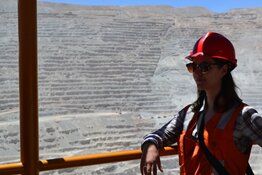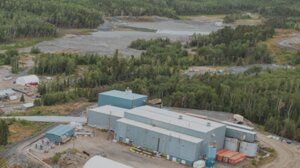 The use of remote sensing techniques for mineral exploration began decades ago. Mineral explorers would point handheld cameras out of aircraft windows and take pictures of the surface below to gather information on topography that could give clues on the location of minerals. The technology has since advanced rapidly. Now, aircrafts and satellites are equipped with sophisticated hyperspectral digital imaging systems that can provide information the human eye is unable to perceive; and when hyperspectral imaging is combined with geographic information systems (GIS), directional and size estimations of deposits can be obtained without having to spend months in the field mapping.
The use of remote sensing techniques for mineral exploration began decades ago. Mineral explorers would point handheld cameras out of aircraft windows and take pictures of the surface below to gather information on topography that could give clues on the location of minerals. The technology has since advanced rapidly. Now, aircrafts and satellites are equipped with sophisticated hyperspectral digital imaging systems that can provide information the human eye is unable to perceive; and when hyperspectral imaging is combined with geographic information systems (GIS), directional and size estimations of deposits can be obtained without having to spend months in the field mapping.Hyperspectral means "beyond the spectrum" and refers to the visible spectrum of light that the human eye perceives. In reality, the human eye can perceive only a sliver of the available spectral information, and with the use of sophisticated sensors, more information can be detected and recorded. This information is used to detect many things, from gold and other metals, oil—and yes—it played a pivotal role in the location of the world's most wanted man, Osama Bin Laden.
Like most remote sensing techniques, hyperspectral imaging exploits the fact that all objects possess a unique spectral fingerprint based on the wavelengths of visible and invisible light that they absorb and reflect. By measuring the relative variations of absorption and reflectance across more than 600 channels (bandwidths) from ultraviolet to thermal infrared, scientists can characterize and identify previously unknown substances. As applied to natural resource exploration, hyperspectral imaging can be used to identify substances on the earth's surface. Every substance, from minerals to hydrocarbons has a unique hyperspectral signature. Hyperspectral data can be acquired with airborne platforms; large tracks of land can be analyzed quickly and efficiently, making the technology well suited to natural resource exploration.





































